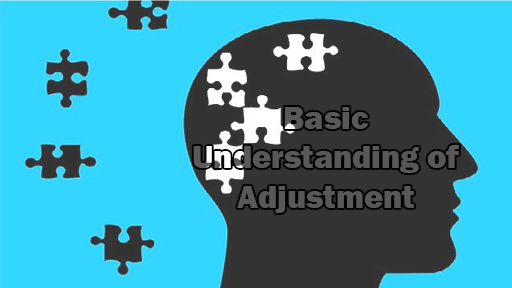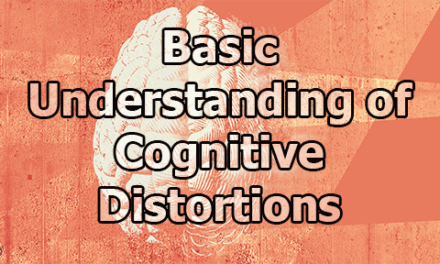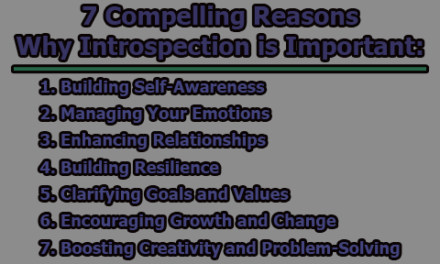Basic Understanding of Adjustment:
Adjustment, in psychology, the behavioral process by which humans and other animals maintain an equilibrium among their various needs or between their needs and the obstacles of their environments. A sequence of adjustment begins when a need is felt and ends when it is satisfied. In the rest of this article, we will explore the basic understanding of adjustment: definitions, importance, characteristics, process, and areas.
Definitions of Adjustment:
The diverse nature of adjustment is reflected in the varied definitions offered by prominent psychologists and scholars. Each definition captures a unique facet of this complex behavioral process, shedding light on the intricacies involved in maintaining balance between individual needs and environmental demands.
According to the C. V. Good, “Adjustment is the process of finding and adopting modes of behaviour suitable to the environment or the changes in the environment”
According to the Shaffer, “Adjustment is the process by which a living organism maintains a balance between its needs and the circumstances that influence the satisfaction of these needs”
Norman talent (1978), adjustment is a state of life when an individual is more or less in harmony with personal biological, social and psychological needs and with the demands of the physical environment.
Benjamin Wolman (1989) defined “adjustment as the harmonious relationship with the environment involving the ability to satisfy most of one’s needs and meet most of the demands both physical and social that are thrust upon one.”
Webster, “adjustment is the establishment of a satisfactory relationship, as representing harmony, conformance, adaptation or the like.”
Lehner and Kube (1964), speak of adjustments a process of interaction between ourselves and environment. In this process one can either adopt environment or after it. Satisfactory adjustment is depends on successful interaction.
According to Eysenck (1972), Adjustment is a state in which the needs of the individual on the one hand and the claims of the environment on the other are fully satisfied. Harmony between the individual and the objective or social environment.
Importance of Adjustment:
Understanding the importance of adjustment is crucial in recognizing its profound impact on an individual’s life and overall well-being. Adjustment, as a psychological process, plays a central role in shaping personality, fostering healthy relationships, and enabling individuals to navigate the complexities of their environments. Here are the importance of adjustment and its implications across various dimensions of human existence.
1. Development of Personality: Adjustment is intricately linked to the development of personality. Personality, as a dynamic organization of psychological systems, is influenced by an individual’s unique adjustment to their environment. Allport’s assertion that personality is shaped by the interplay between the individual and the environment underscores the pivotal role of adjustment in the formation and evolution of one’s personality.
The way individuals adapt to challenges, satisfy their needs, and navigate interpersonal relationships contributes to the dynamic nature of their personality. Successful adjustment fosters the development of a well-rounded and resilient personality, capable of effectively responding to the demands of different situations.
2. Harmonious Relationship with Surroundings: Every organism, including humans, seeks a harmonious relationship with its surroundings to satisfy primary needs such as hunger, thirst, and security. Adjustment serves as the constant effort on the part of individuals to align themselves with the dynamic changes in their environment. Unlike other animals, humans must adjust not only to their physical surroundings but also to the psychological and socio-cultural aspects of their environment.
Achieving a harmonious relationship with the surroundings involves the continuous modification of behaviors, attitudes, and responses. Through adjustment, individuals learn to move along with the ever-changing environment, ensuring a balanced and adaptive interaction with the external world.
3. Core of Personality: The uniqueness of an individual’s adjustment becomes the core of their personality. Allport’s definition of personality as the dynamic organization within the individual, determined by psychological systems that influence their unique adjustment, emphasizes the intrinsic connection between personality and adjustment.
An individual’s adjustment reflects their ability to cope with challenges, satisfy needs, and maintain equilibrium in various life situations. The continuous interplay between the organism and the environment contributes to the dynamic and evolving nature of personality, with adjustment at its core.
4. Balancing Psychological and Socio-Cultural Needs: Unlike other animals, humans must navigate not only their physical environment but also the psychological and socio-cultural dimensions of their surroundings. Adjustment plays a crucial role in balancing psychological needs, such as acceptance, affection, and self-esteem, with the demands of the socio-cultural environment.
Successful adjustment requires individuals to build variations in their behavior to achieve harmony with themselves, others, and the socio-cultural context. The ability to strike a balance among various forces and maintain equilibrium between individual needs and the socio-cultural environment is a key aspect of psychological well-being.
5. Contribution to a Healthy Personality: Adjustment contributes significantly to the development and maintenance of a healthy personality. Criteria for evaluating the adequacy of adjustment, including physical health, psychological comfort, work efficiency, social acceptance, flexibility in behavior, healthy attitudes and interests, and a healthy philosophy of life, collectively shape the characteristics of a well-adjusted individual.
A healthy personality is characterized by the absence of physical ailments, psychological diseases, and the effective use of occupational or social capacities. Additionally, social acceptance, flexibility in behavior, and a positive philosophy of life further contribute to the overall well-being of the individual. Adjustment, therefore, acts as a cornerstone in the cultivation of a healthy and adaptive personality.
6. Continuous Interaction with the Environment: The adjustment process involves continuous interaction between individuals and their environment. Recognizing that no human adjustment is ever complete or ideal, the concept of adjustment underscores the need for ongoing modification in response to the dynamic nature of both the individual and their surroundings.
As individuals encounter new challenges, face evolving circumstances, and undergo personal growth, the process of adjustment becomes a reciprocal and iterative endeavor. Adjustment acknowledges that there is always some gap between individual needs and their complete satisfaction, highlighting the need for continuous adaptation to achieve relatively satisfying adjustment.
7. Realization of Relative Happiness and Efficiency: An individual is considered well-adjusted when they are related to a reasonably adequate environment in a way that promotes relative happiness, efficiency, and a proper degree of social feeling. The achievement of adjustment implies that the individual has effectively related to their environment, demonstrating a capacity for happiness, efficiency in their pursuits, and a positive social orientation.
Realizing relative happiness involves the satisfaction of needs, the ability to navigate challenges, and the cultivation of positive attitudes and behaviors. Efficiency in various life domains, including work, relationships, and social interactions, reflects the successful adaptation of the individual to their environment. The attainment of relative happiness and efficiency underscores the positive outcomes associated with effective adjustment.
Characteristics of Adjustment:
The adequacy of adjustment is a complex and multifaceted concept, with psychologists employing various criteria to judge its effectiveness. Here are the key characteristics that psychologists consider when assessing the quality of an individual’s adjustment.
1. Physical Health: One fundamental criterion for judging the adequacy of adjustment is an individual’s physical health. A well-adjusted person is expected to be free from physical ailments such as headaches, ulcers, indigestion, and impairments of appetite. Psychologists recognize that some physical symptoms may have psychological origins, impacting an individual’s overall physical efficiency.
The interconnectedness between mental and physical health is underscored in this criterion. Psychological well-being contributes to physical health, and any disturbances in mental equilibrium can manifest in physical symptoms. Thus, a well-adjusted individual is presumed to maintain good physical health, demonstrating the importance of a holistic approach to adjustment.
2. Psychological Comfort: Psychological comfort is another crucial characteristic used to assess adjustment. A well-adjusted individual should exhibit psychological well-being, free from prevalent psychological disorders such as obsession, compulsion, anxiety, and depression. Excessive occurrences of these psychological issues may prompt individuals to seek professional advice, signaling a potential inadequacy in adjustment.
The psychological aspect of adjustment delves into the emotional stability and mental health of an individual. It recognizes that a well-adjusted person is expected to navigate life’s challenges without succumbing to debilitating psychological issues. The presence of psychological comfort contributes to an individual’s overall sense of well-being and resilience.
3. Work Efficiency: Work efficiency is a criterion that assesses an individual’s ability to make full use of their occupational or social capacities. A well-adjusted person is presumed to efficiently utilize their skills and capabilities within their social setting. The effectiveness with which an individual performs their occupational or social roles is indicative of their level of adjustment within that specific context.
This criterion emphasizes the practical application of one’s abilities and the successful integration of these abilities into one’s social environment. Work efficiency becomes a tangible measure of adjustment, as it reflects an individual’s contribution to their social setting and their ability to meet the demands of their roles.
4. Social Acceptance: Social acceptance is a fundamental aspect of adjustment, reflecting an individual’s ability to be accepted by others in their social environment. A well-adjusted person is one who adheres to social norms, beliefs, and values, earning acceptance within their social circle. This criterion acknowledges the importance of social cohesion and conformity to societal expectations.
The expectation to obey social norms and demonstrate adherence to shared values underscores the role of societal standards in shaping the criteria for social acceptance. The definition of what is socially acceptable may vary across different cultures, highlighting the cultural relativity inherent in the assessment of social adjustment.
5. Flexibility in Behavior: Flexibility in behavior is considered a hallmark of well-adjusted individuals. A person who is able to adapt and adjust their behavior to changing circumstances is viewed as exhibiting flexibility in adjustment. This characteristic recognizes the dynamic nature of life and the need for individuals to modify their behavior in response to evolving situations.
A well-adjusted person demonstrates adaptability and resilience, navigating challenges with flexibility rather than rigidity. The capacity to adjust behavior in response to varying circumstances reflects a higher level of adjustment, acknowledging that individuals must navigate a constantly changing environment.
6. Healthy Attitudes and Interests: Well-adjusted individuals are expected to possess healthy habits, attitudes, and interests. This criterion delves into the psychological and emotional aspects of an individual’s adjustment. Healthy attitudes and interests contribute to overall well-being, shaping an individual’s approach to life and their interactions with others.
This characteristic emphasizes the importance of positive psychological attributes and interests that align with societal norms. A person with healthy attitudes is likely to contribute positively to their social environment, fostering a sense of well-being and harmony.
7. Healthy Philosophy of Life: A well-adjusted person is presumed to possess a healthy philosophy of life that governs their conduct and activities. This philosophy of life encompasses an individual’s perspective on success, failure, and the ability to tolerate challenges. It reflects a balanced and resilient outlook that contributes to a person’s overall adjustment.
A healthy philosophy of life provides individuals with the resilience to face failures, the capacity to learn from experiences, and a tolerance for the uncertainties of life. This characteristic emphasizes the importance of a positive and constructive worldview in the assessment of adjustment.
Adjustment Process:
The adjustment process is a dynamic and continuous interaction between individuals and their environment. This process involves various factors, including motivation, frustration, conflict, variable behavior, satisfaction, non-adjective behaviors, and readjustment. Understanding these components provides insights into how individuals navigate challenges, satisfy needs, and strive for a harmonious relationship with their surroundings.
1. Motivation: Motivation serves as the driving force behind the adjustment process. It encompasses feelings of inferiority, ambitions toward specific careers, anxieties over failure, and drives toward activities that bring prestige or affection. Motives persist as conditions that dominate and direct behavior until individuals respond in a way that alleviates or removes them.
Basic physical needs, strong desires, and highly anticipated goals act as motives, propelling individuals to engage in behaviors aimed at satisfying these needs. Motivation initiates the adjustment process by creating a stimulus for action and prompting individuals to navigate their environment in pursuit of fulfillment.
2. Frustration and Conflict: Environmental conditions or incompatible motives may lead to frustration and conflict during the adjustment process. Frustration arises when obstacles or challenges impede the satisfaction of a motive, while conflict occurs when one’s initial motive clashes with another motive or is blocked by external factors.
The significance lies not only in the frustration itself but also in the subjective meaning it holds for the individual. The perception of frustration and conflict influences how individuals interpret and respond to challenges, shaping their subsequent behaviors and adjustments.
3. Variable Behavior: When motives are blocked, individuals exhibit variable behavior, often characterized as trial and error. In response to frustration or conflict, individuals may engage in a range of activities, some of which may be successful in addressing the initial motive. Variable behavior represents a series of attempts to find effective solutions and overcome obstacles.
This phase acknowledges the complexity of human responses to challenges. Individuals experiment with different behaviors, adapting and modifying their approaches in the pursuit of satisfaction. The trial-and-error nature of variable behavior reflects the adaptive nature of the adjustment process.
4. Satisfaction: Satisfaction is the key outcome of the adjustment process. It involves the removal of the motivating condition and the relaxation of tension associated with the desire. When individuals successfully satisfy their motives, a state of adjustment is achieved. Satisfaction is a dynamic and recurring aspect, as the process of satisfying motives tends to be repeated in similar situations in the future.
The attainment of satisfaction is a critical element in the adjustment process, signaling that the individual has effectively navigated challenges and fulfilled their needs. It reinforces the reciprocal nature of adjustment, where successful satisfaction contributes to a relatively satisfying adjustment in subsequent situations.
5. Non-Adjective Behaviors: Non-adjective behaviors, in relation to the motive under consideration, refer to actions that do not contribute to satisfying the specific motive. However, these behaviors may be considered adjective concerning other motives or societal standards. This distinction highlights the contextual nature of behavior and the importance of considering multiple perspectives.
Behavior that may appear abnormal or socially inappropriate from one standpoint may hold significance when viewed through alternative frameworks. The understanding of non-adjective behaviors contributes to a more nuanced evaluation of adjustment, acknowledging the role of subjective societal standards.
6. Readjustment: Readjustment is an integral aspect of the adjustment process. In order to satisfy a motive persistently blocked by non-adjective reactions, individuals must modify their behavior. Readjustment involves eliminating non-adjustive reactions that fail to satisfy the motive and substituting behaviors that align with the desired adjustment.
Human adjustment is never considered complete or ideal, leading to the recognition that continuous modification is necessary. Readjustment may entail a reorganization of motives, with an emphasis on certain motives over others. It reflects the ongoing and reciprocal nature of the adjustment process, acknowledging the need for flexibility and adaptability.
Areas of Adjustment:
Adjustment permeates various facets of an individual’s life, influencing their interactions with the world around them. Here, we explore distinct areas of adjustment, shedding light on how individuals navigate and adapt within specific domains, including home life, social environments, emotional well-being, health, educational settings, marital relationships, career pursuits, old age, and financial considerations.
1. Home Adjustment: Home adjustment constitutes an essential aspect of human life, shaping the foundation of one’s personality and influencing future endeavors. Proper adjustment within the home environment contributes to the development of a well-rounded and emotionally stable individual. Adolescents, in particular, are significantly impacted by their home environment, influencing their education and future life.
Home adjustment involves individuals aligning themselves with the dynamics of their familial setting, fostering positive relationships with family members, and contributing to a harmonious domestic atmosphere. The quality of home adjustment can have far-reaching effects on an individual’s overall well-being and interpersonal relationships.
2. Social Adjustment: Social adjustment is a dynamic process where individuals strive to maintain or enhance their security, comforts, status, or creative inclinations within the ever-changing conditions of society. This area of adjustment involves navigating social interactions, adhering to societal norms, and adapting to the evolving expectations within one’s social circle.
Successful social adjustment requires individuals to strike a balance between personal needs and the demands of their social environment. It encompasses the ability to engage in positive social interactions, cultivate meaningful relationships, and navigate the complexities of social expectations. Social adjustment is crucial for individuals to feel a sense of belonging and fulfillment within their broader social context.
3. Emotional Adjustment: Emotional adjustment involves managing and regulating one’s emotional responses to various stimuli. Frequent, intense, and seemingly unjustified emotional outbursts can lead others to perceive an individual as immature, while suppressing emotional expression may result in moodiness, rudeness, and a lack of cooperation.
Achieving emotional adjustment requires individuals to strike a balance in expressing their emotions appropriately. Emotional well-being contributes significantly to overall adjustment, influencing how individuals perceive and respond to challenges in both personal and social contexts.
4. Health Adjustment: Heightened emotionality, even when expressed in controlled ways, can impact an individual’s nervous system and overall health. Specific mannerisms, such as nail-biting or giggling, may emerge as responses to heightened emotionality, creating impressions of silliness or immaturity. Health adjustment involves managing emotional responses to prevent negative physical implications.
The link between emotional well-being and physical health is emphasized in this area of adjustment. Individuals with heightened emotionality may experience heightened stress levels, potentially leading to health issues. Health adjustment necessitates strategies for maintaining both emotional and physical well-being.
5. School & College Adjustment: Adjustment in educational settings, both in school and college, is a critical aspect of an individual’s development. During childhood and adolescence, individuals must adjust to the expectations of teachers, peers, and the overall school environment. The need for teacher acceptance in early years transitions to peer acceptance during adolescence.
Peer pressures, academic challenges, and social dynamics significantly impact school adjustment. As individuals progress to college, they face new challenges related to peer relationships, learning processes, and achievement. College adjustment involves adapting to a more independent and complex educational environment, influencing future career pursuits.
6. Sexual (Marital) Adjustment: Sexual or marital adjustment involves interpersonal issues related to selecting a mate, addressing personal needs, and navigating sexual dynamics within a marriage. Acceptance of one’s sexuality, communication about sexual preferences, and mutual understanding contribute to successful sexual adjustment.
Marital satisfaction is closely linked to sexual adjustment, with factors such as communication, emotional intimacy, and shared values influencing the overall quality of the relationship. Achieving sexual adjustment requires open communication, empathy, and a willingness to understand and meet each other’s needs.
7. Career (Occupational) Adjustment: Career or occupational adjustment is a crucial area that involves making appropriate career choices, acquiring the necessary education and skills, and achieving satisfaction in the workplace. The complex interplay of socio-economic factors, personal interests, job requirements, and workplace attitudes influences an individual’s career adjustment.
The transition from education to employment and the subsequent satisfaction with one’s job are integral aspects of career adjustment. Societal dictates, gender roles, and societal expectations can also impact how individuals navigate their career paths. Achieving career adjustment involves aligning personal aspirations with available opportunities and societal expectations.
8. Old Age Adjustment: Adjustment during old age presents unique challenges, considering the physiological changes individuals undergo and the potential impact on mental health. Financial considerations, family support, and societal attitudes toward the elderly contribute to adjustment issues during this life stage.
Old age adjustment encompasses adapting to changes in physical health, maintaining social connections, and finding meaning and purpose in later life. The breakdown of traditional joint families and evolving societal norms may influence how individuals experience old age. Coping with financial hardships, societal attitudes, and changes in social support structures are key components of old age adjustment.
9. Financial Adjustment: Financial adjustment involves managing economic resources, addressing financial challenges, and adapting to changes in financial status. Marital relationships can be significantly influenced by financial considerations, such as control over money and financial responsibilities.
Financial adjustment is closely tied to vocation, family financial situations, and societal expectations. Changes in socio-economic standards and living styles can impact how individuals adjust to their financial circumstances. Achieving financial adjustment requires individuals to navigate the complexities of budgeting, financial responsibilities, and societal expectations.
Adjustment as an Achievement and “The Normality”:
The concept of adjustment is intricately tied to the notions of achievement and normality, reflecting the dynamic interplay between individual behavior and societal expectations. Here are the perspectives that frame adjustment as both an achievement and a construct shaped by social norms.
1. Adjustment as an Achievement: Interpreting adjustment as an achievement involves evaluating an individual’s performance based on certain parameters or expectations. Psychologists focus on effective performance in meeting societal expectations, adherence to cultural norms, and the fulfillment of responsibilities. This perspective entails judging the quality of adjustment against predefined criteria, considering it an accomplishment when an individual successfully aligns with these expectations.
For instance, someone adapting well to societal norms, fulfilling their responsibilities, and conforming to cultural expectations may be deemed well-adjusted from an achievement standpoint. This model underscores the measurable aspects of performance and the qualitative evaluation of behavior against societal or cultural standards.
However, the subjectivity inherent in defining these parameters should be acknowledged, as cultural and societal norms vary across different contexts. The dynamic nature of human behavior necessitates considering adjustment beyond a fixed achievement, paving the way for an exploration of adjustment as an ongoing process.
2. Adjustment: “The Normality”: The social construction of adjustment is equally vital in understanding its implications. One of the connotations of adjustment is linked to the concept of “normality.” The classification of measures commonly used by people to construe “normality” plays a crucial role in societal perceptions of adjustment. “Normal” can be understood as a statistical norm, an ideal standard, or a behavior that falls neither into the category of abnormal nor subnormal.
In many societies, the prevailing view of the powerful majority dictates what is considered “normal.” If the majority accepts a particular way of life as correct, deviations from that norm are likely to be unaccepted and labeled as “not normal.” This can be observed in various aspects of life, such as cultural practices, social norms, and even legal frameworks.
Taking the example of marriage, societal norms and legal frameworks often dictate what is considered “normal.” For instance, Hinduism describes marriage as a sacred act, and legally, certain conditions are set for a Hindu marriage. Societal practices, however, may vary, with some regions practicing polygamy (having multiple spouses) in different forms such as polygyny (man with multiple wives) or polyandry (woman with multiple husbands).
The evolving nature of societal norms is evident in the changing dynamics of marriage practices. Although various practices may prevail in society, the majority view becomes the norm and often translates into legal frameworks. The evolution of these norms is closely tied to socially constructed evaluations and value-oriented idealistic concepts.
In conclusion, this analysis of adjustment provides a nuanced understanding of the behavioral process that underpins human interaction with the environment. From its psychological foundations to its social and cultural implications, adjustment emerges as a dynamic and continuous process that significantly influences individual well-being and societal harmony. As we navigate the complexities of life, the ability to adjust emerges as a critical skill, shaping our personalities and influencing the quality of our interactions in various domains.

Assistant Teacher at Zinzira Pir Mohammad Pilot School and College










